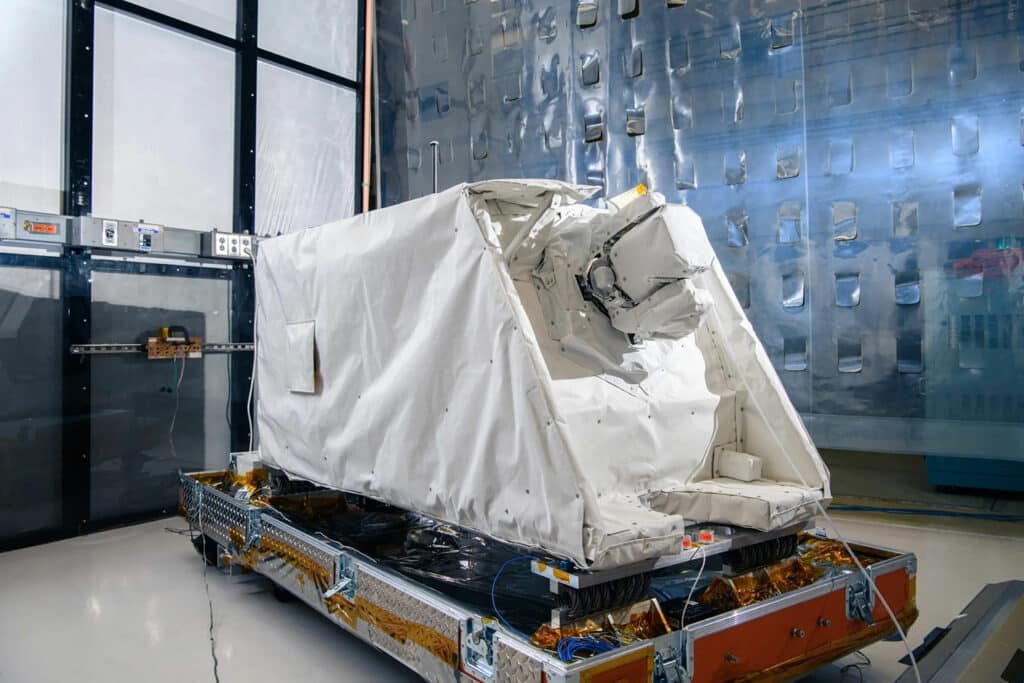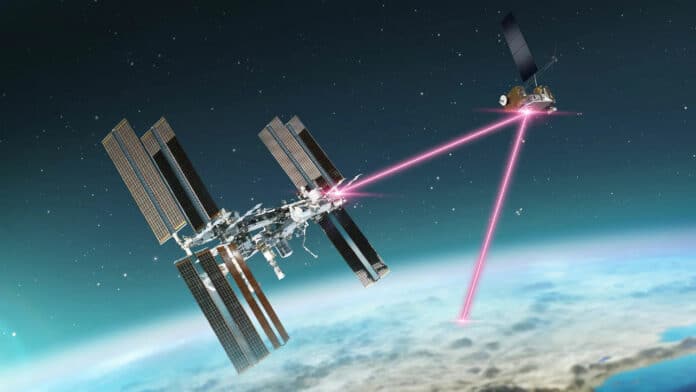NASA is demonstrating laser communications on multiple missions – showcasing the benefits infrared light can have for science and exploration missions transmitting terabytes of important data.
The space agency is set to test its first two-way laser communication relay system. The ILLUMA-T (Integrated Laser Communications Relay Demonstration Low Earth Orbit User Modem and Amplifier Terminal) will soon be launched at the International Space Station to demonstrate how missions in low Earth orbit can benefit from laser communications.
The ILLUMA-T is scheduled to be launched aboard the SpaceX Falcon 9 rocket in early November. The project will complete NASA’s first bi-directional, end-to-end laser communications relay by working with the agency’s LCRD (Laser Communications Relay Demonstration).
Launched in December 2021, LCRD is currently demonstrating the benefits of laser communications from geosynchronous orbit by transmitting data between two ground stations on Earth in a series of experiments.
Once installed on the space station’s exterior, the ILLUMA-T will complete NASA’s first in-space demonstration of two-way laser relay capabilities.

ILLUMA-T’s optical module consists of a two-axis gimbal and a telescope that enable it to point and track LCRD in geosynchronous orbit. The optical module is about the size of a microwave, and the payload itself is comparable to a standard refrigerator.
The ILLUMA-T will transmit data from the space station to LCRD at 1.2 gigabits per second. The LCRD will then relay the data down to optical ground stations in California or Hawaii. From these ground stations, the data will be forwarded to the LCRD Mission Operations Center at NASA’s White Sands Complex in Las Cruces, New Mexico.
After this, the data will be sent to the ILLUMA-T ground operations teams at NASA‘s Goddard Space Flight Center in Greenbelt, Maryland, where engineers will verify the accuracy and quality of the data that went through this end-to-end relay process.
When ILLUMA-T transmits its first beam of laser light through its optical telescope to LCRD, the end-to-end laser communications experiment begins. ILLUMA-T could become an operational part of the space station after the experimental phase with LCRD and enable NASA to transmit and receive more data from the orbiting laboratory.
Laser communications could revolutionize how researchers on Earth interact with science and technology investigations aboard the space station. Astronauts engage in research across various fields such as biological and physical sciences, technology, Earth observations, and more within the orbiting laboratory, all aimed at benefiting humanity.
The ILLUMA-T project has the potential to offer enhanced data rates for these experiments, allowing for the transmission of larger amounts of data back to Earth at once.
